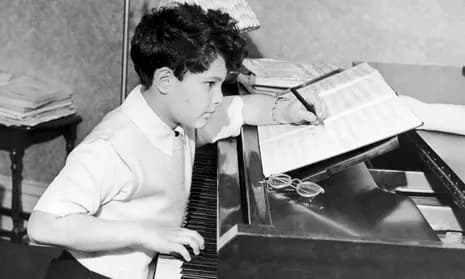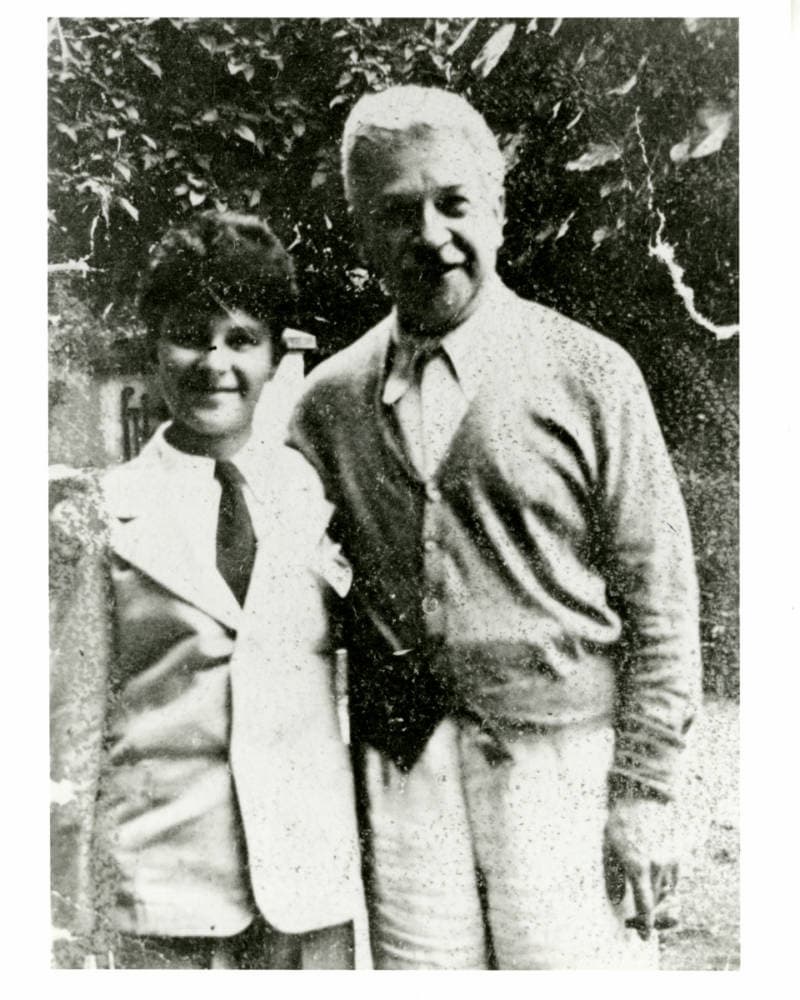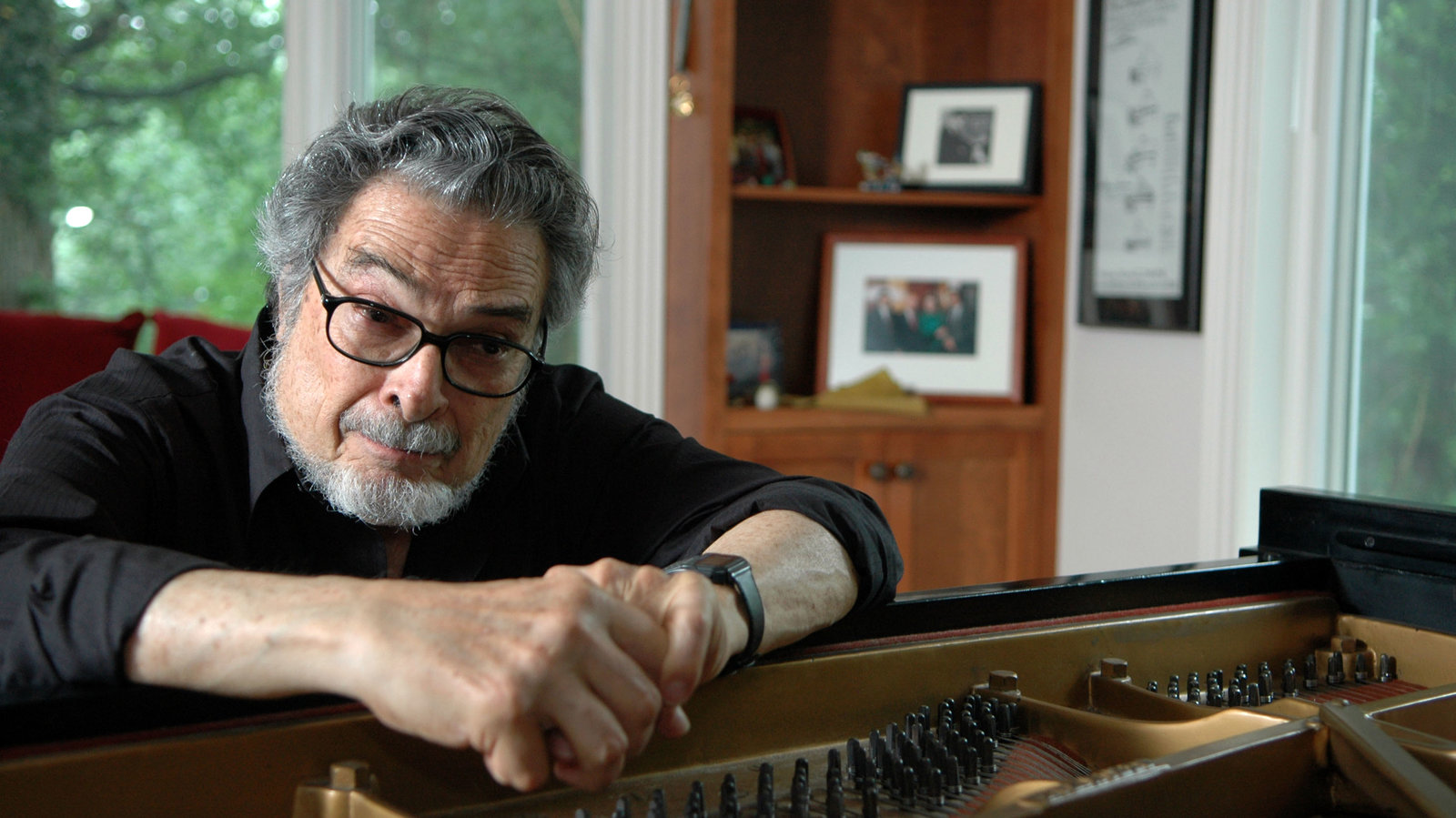Leon Fleisher is “one of the most refined and transcendent musicians the United States has ever produced.” A child prodigy of the highest calibre, Fleisher couldn’t remember a time when he wasn’t playing the piano, and Pierre Monteux called him the “pianistic find of the century.” Technical difficulties simply didn’t exist, and he paired intellectual command with acute sensitivity to whatever he played. After focal dystonia incapacitated his right hand, Fleisher focused on the left-hand legacy of pianist Paul Wittgenstein but eventually overcame all adversity and returned to perform with all ten fingers.
Leon Fleisher Plays Brahms’ Piano Concerto No. 1 in D minor, Op. 15 “Allegro non troppo”
Pianist or President

Leon Fleisher
Leon Fleisher was born on 23 July 1928 in San Francisco, the son of a poor Jewish immigrant family. His father, Isidor, was born in Odessa and made ladies’ hats in a little store, while his mother, Bertha, was born in Poland. Leon describes her “as an extraordinary woman because she was uneducated in the formal sense, but she had a real awareness of the artistic and spiritual potential and the possibilities of human existence.”
Leon’s brother Ray took piano lessons on an upright piano in the apartment. Apparently, Ray wasn’t particularly interested or very good, but young Leon was observing the lessons with great attention. When the lesson was finished, Leon would go to the piano and play back what he had heard. It was decided that Leon should have lessons as well, and his mother gave him a choice. “Either I was to be the first Jewish President of the United States or a great concert pianist.”
Franz Schubert: Piano Sonata No. 21 in B-Flat Major, D. 960 (Leon Fleisher, piano)
First Lessons

Leon Fleisher at age 9
A first piano teacher, at the age of four, taught Leon to read music but couldn’t keep up with the boy’s talent. As such, Leon became a student of Lev Shorr, a Russian pianist and teacher well-known in the San Francisco area. Leon remembers him as a bald man, very neatly dressed and always carrying a cane. Apparently, “it was not really a good lesson until he made me cry, so when that happened, he would take me out to lunch after the lesson and feed me lamb chops.”
Fleisher played his first recital at the age of eight and performed several school concerts with the orchestra. As such, he came to the attention of Pierre Monteux, the conductor of the San Francisco Symphony Orchestra, and it was somehow agreed that Fleisher should study with the great Artur Schnabel. In the meantime, however, Fleisher took lessons with Ludwig Altman and Gunnar Johansson.
Ludwig van Beethoven: Piano Concerto No. 4 in G Major, Op. 58 (Leon Fleisher, piano; Cleveland Orchestra; George Szell, cond.)
Artur Schnabel

Leon Fleisher with Artur Schnabel
When it was time to contact Artur Schnabel, he initially declined because he never accepted anybody under the age of sixteen “because before that age, they didn’t really understand what he was talking about.” When Schnabel came to California, he would always dine with the Hertz family. Such was the case in the winter of 1938, and hidden in the next room behind French doors in the living room was Leon Fleisher sitting at the piano. After dinner, the hostess opened the French doors to the living room, and there was Leon.
In an interview with Susan Weiss in 2007, Fleisher remembers, “Schnabel, being a gentleman, did not refuse to hear me play. He gave in, and I played for him. I played “Sonetto del Petrarca” No. 123 by Liszt, and the cadenza to the B-flat Beethoven concerto. And afterwards, Schnabel was very sweet. He invited me to come study with him starting that summer in Tremezzo, Lago di Como. And that’s the way it started when I was nine.”
Leon Fleisher Plays Chopin’s Nocturne in D-flat, Op. 27, No. 2
Working with Schnabel

Leon Fleisher © The New York Times
For Fleisher, Schnabel was a great figure in his time, a truly historical figure who re-established the integrity of the composer at the beginning of the 20th century. According to Fleisher, “Schnabel taught me to look for that integrity in the score. It wasn’t just a question of I feel it that way. That was disallowed. You had to point to the text and see it the way the composer saw it to justify whatever choices you made, whatever decisions you made, and the way to do it. So the performer then achieved a sense of authority and a conviction.”
For Fleisher, Schnabel was just the most inspiring teacher, and he worked with him for 10 years. “Whenever he touched the instrument,” Fleisher explained, “the sound that he drew from a little upright was infinitely beautiful. Every time he touched the keys, it was transformative as a human experience. His connection to the universe around him was astounding. Everything that he did was not only so inspired and so convincing to the utmost but was also based infallibly in the text, and after a while, I could scarcely distinguish between Mozart and Schnabel, or Beethoven and Schnabel, or Brahms and Schnabel.”
For more of the best in classical music, sign up for our E-Newsletter
